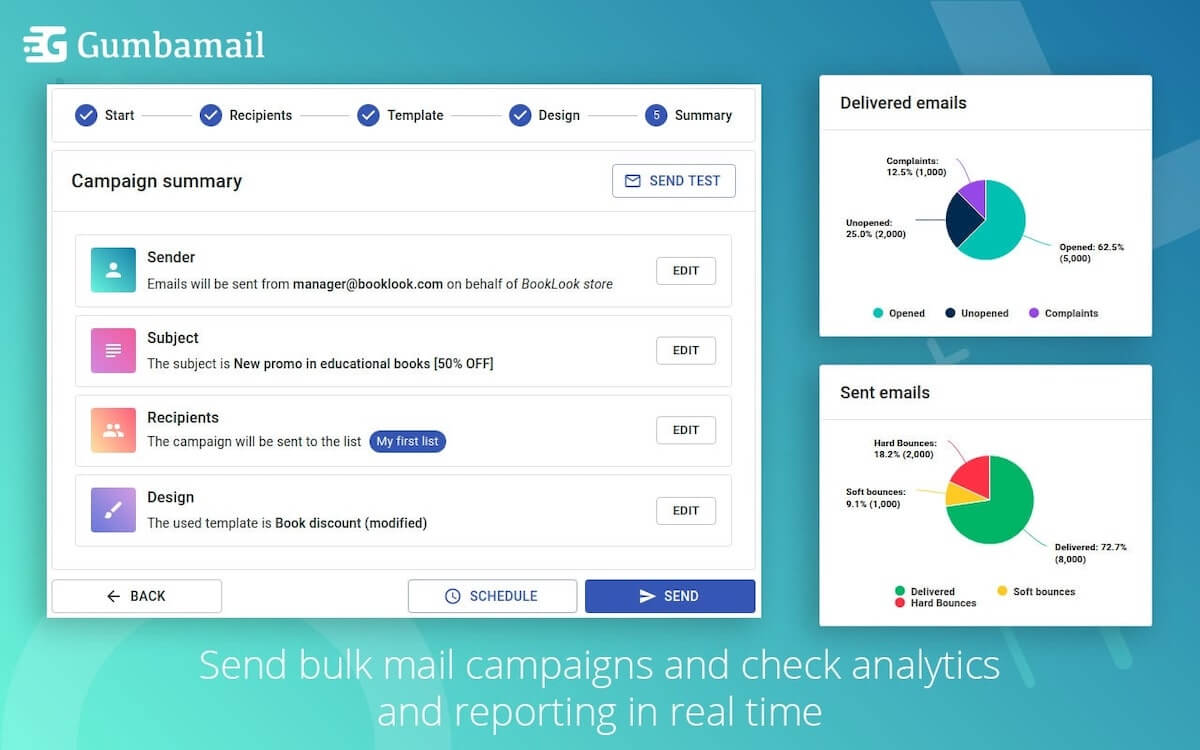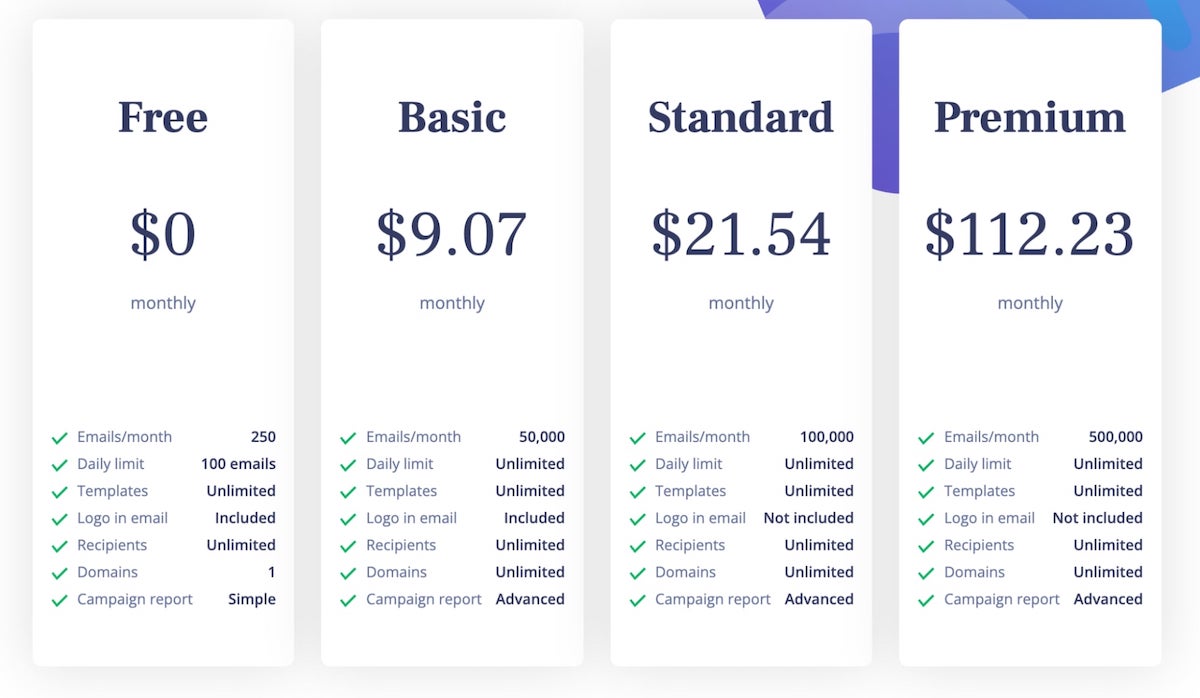5 Reasons Why Mergo – Mail Merge Falls Short for Small Business Owners
As a business owner, you need to focus on gaining new leads to grow and scale your business. Unfortunately, research shows that half of small businesses don’t have a marketing plan in place, which can prevent you from attracting new customers.
If you’re putting together your marketing strategy for the first time, email automation is one of the first channels you should consider. Email is one of the most efficient forms of all marketing mediums, getting you the biggest return on your investment. In fact, research shows that the ROI of email ranges from 32:1 for the media and entertainment industry, and goes as high as 45:1 in the retail and e-commerce space.
To maximize your return, you need an affordable solution built specifically for small business owners. Mergo – Mail Merge is an email marketing app that works seamlessly with your existing Gmail account, making it a popular choice amongst first-time email marketers — however, it does come with some shortcomings. Below, we explain what Mergo is, how it works, and Gmail add-on alternative that might be a better fit for your marketing needs.
What Is Mergo – Mail Merge and How Does it Work?
Mergo – Mail Merge is an email marketing plugin that allows you to send mass email campaigns from your existing Gmail account. Mergo works for individuals and business owners alike, allowing you to send weekly newsletters, wedding invitations, holiday greetings, or lead generation campaigns to your list.
With Mergo, you can import contacts directly from your Google Contacts, a .CSV file in Excel, or by simply adding email addresses to a Google Sheet. From there, you’ll write your Gmail draft just as you would a regular email, type your subject line, and add merge fields to personalize your message.
Next, you can send a test email and make any necessary changes. From there, you can send your message or schedule it to be sent at a later date. Once your campaign is sent, you can track results in real time on the right side bar of your screen, showing you who opened, clicked, responded, and/or unsubscribed from your message.
In addition, the Mergo API offers a number of new features that help business owners push potential customers down the sales funnel. For example, Mergo allows you to send and schedule automated reminders to your email list, or follow up with Google Forms submissions.
Why Mergo – Mail Merge Might Not Be the Best Fit for Your Business
Mergo is an affordable, easy-to-use email automation tool that helps small businesses establish their marketing presence. However, before signing up for Mergo, there are a few shortcomings you should know about, including:
1. There Are No Templates Available
Sending a branded email newsletter with the Mergo Google app is not easy. The platform does not offer email templates, instead requiring you to design your own newsletter in Google Docs.
You will be forced to select your own background colors, add and resize images (including your logo), and change the fonts to match your internal branding. This adds additional time to your already-tight schedule.
Gumbamail vs. Mergo

Unlike Mergo, you don’t have to waste time building your own templates with Gumbamail. Gumbamail offers 800+ templates with every plan (including the free plan!). Plus, with Gumbamail’s drag-and-drop email builder, you can easily customize each template to your company’s branding, easily swapping out placeholder photos, changing fonts, or using your internal color palette in a matter of minutes.
2. There’s No Reporting Dashboard
Mergo’s mail merge tool provides email tracking within Google Sheets and within a left sidebar. These reporting features only provide basic metrics, such as email opens and unsubscribe rate.
Gumbamail vs. Mergo

Unlike Mergo, Gumbamail’s tracking functionality includes a dedicated reporting dashboard that provides a better user experience for the marketer or business owner. With Gumbamail, you get visually attractive reports, with a clear understanding of how each campaign performs. In addition, it provides a high-level overview of the health of your list, showing your deliverability rate, bounce rate, and other metrics.
3. You’ll Need to Manually Remove Unsubscribes
To stay compliant with EU-GDPR and CAN-SPAM laws, every mass email needs to include an unsubscribe link. While Mergo allows you to include this link, it simply flags a contact as “unsubscribed” in your Google Sheet. In other words, you will need to check your list before sending every single email campaign to ensure you don’t have any new unsubscribes. Then, you will need to manually remove them from your contact list. (And if you forget, you run the risk of breaking anti-spam laws.)
Gumbamail vs. Mergo
With Gumbmail, it’s easy to abide by anti-spam laws. Gumbamail automatically includes an unsubscribe link with every email template, so you don’t need to add it manually. Plus, once a contact unsubscribes from your list, Gumbamail will automatically remove them — ensuring your email message doesn’t get flagged as spam.
4. There’s No Transparent Pricing
As a small business owner, you need to keep a sharp eye on your budget. Unfortunately, Mergo does not offer transparent pricing, which can cause several unwelcome surprises on your P&L.
Mergo provides a freemium model, allowing you to send 30 email campaigns for free. However, after that, there is no information available on Mergo’s website explaining what you will be charged. On the Google Workspace Marketplace page, it simply states that plans “start at $1.5 / month,” but it doesn’t explain what that includes.
Gumbamail vs. Mergo

With Gumbamail, pricing is straightforward, allowing you to set a monthly marketing budget. Like Mergo, Gumbamail offers a freemium plan, which includes 250 emails per month, a 100-email daily sending limit, and unlimited email templates.
From there, plans range from $9.07-$112.23 per month, which include 50k, 100k, or 500k emails per month. All paid plans include an unlimited daily sending limit, templates, logos, domains, and recipients in addition to advanced reporting.
5. There’s Strict Sending Limits
Mergo’s mail merge for Gmail tool contains strict sending limits, which can be a drain on your time and resources. With Mergo, you can only send 500 emails per day with your personal Gmail account or 2,000 emails with your Google Workspace (formerly GSuite) account. In other words, if your list includes 600 recipients, you will need to send your message in two batches over a 48-hour span.
Gumbamail vs. Mergo
Gumbamail is able to completely bypass Gmail’s daily sending limits, offering unlimited daily sends for all paid plans. Therefore, you can send your blast emails in one swoop, which saves you time and resources.
Make the Switch from Mergo to Gumbamail
Mergo is a new generation of Google add-ons that allows you to launch marketing campaigns from your existing Gmail account. Small business owners use Mergo to send invitations, follow up with leads, and launch a monthly newsletter.
Unfortunately, Mergo has a number of drawbacks that every business owner should know. Mergo offers limited reporting features, does not offer any templates, lacks a drag-and-drop builder, and forces you to manually unsubscribe contacts. Plus, it has strict daily sending limits and doesn’t offer transparent pricing.
For these reasons, many Mergo users are making the switch to Gumbamail. Gumbamail is the Gmail add-on that allows you to easily send branded emails from your existing Gmail account, without worrying about daily sending limits.
Ready to see how Gumbamail can transform your marketing strategy? Download the free plugin to get started.


